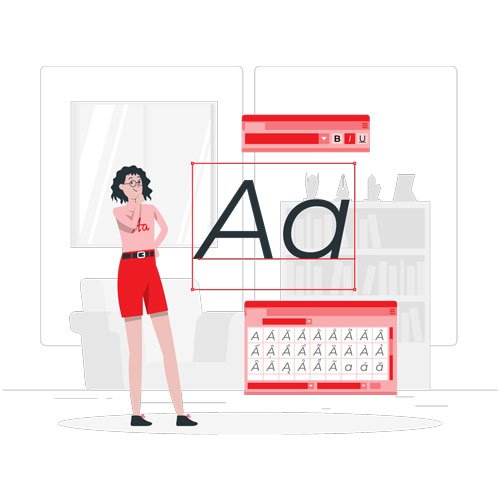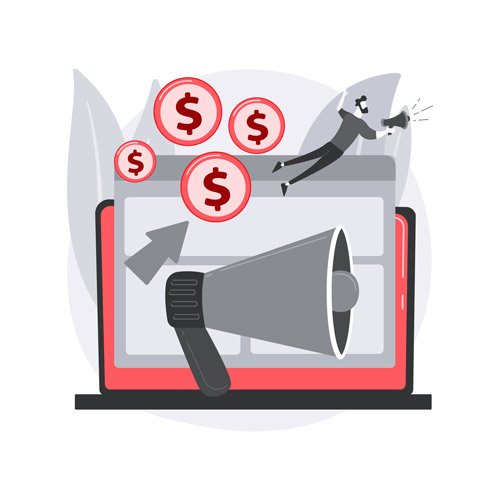Content Marketing Glossary & FAQs
Simplifying Industry Buzzwords one Definition at a Time
What is an Abandoned Cart?
When a user adds a product to the shopping cart of an eCommerce site but doesn’t proceed to checkout and complete the purchase. There are a variety of reasons why browsers may abandon their carts. Some shoppers use their cart as a kind of “wish list,” others may still be shopping around on other sites, and some may simply decide the product isn’t right for them.
For this reason, it’s often helpful to set up abandoned-cart emails and remarketing campaigns to remind users that they still have items in their cart or that they found products of interest on your site. These marketing initiatives are often the small nudge that consumers need to proceed to checkout.
If you have high cart-abandonment rates, there may be something wrong with your checkout page or process. As you optimize your site, you should see these rates improve.
What is A/B Testing?
A/B Testing, sometimes called “split-testing” or “bucket testing,” is a methodical, data-driven process of testing two variations (A and B) of a particular piece of marketing content. This content could be a landing page, an email newsletter, or a paid ad. Sometimes, the difference between versions A and B is as small as different colored buttons; other times it’s as significant as swapping out all of the copy.
Marketers test which version works better to drive audiences to take a particular action. In the context of content marketing, this action is referred to as a “conversion.” When a particular version shows better conversion rates, decision-makers will then know which version audiences should see.
What does Above the Fold Mean?
The portion of a webpage that is visible on the screen without scrolling and loads first. The term originates from the early days of publishing, where people would use the term “above the fold” to describe the content on the top half of the front page of a newspaper.
Because content in this section is the most visible on websites, copywriters, journalisms, and marketers, as well as anyone vying for a reader’s attention, will use attention-grabbing headlines and eye-catching visuals above the fold.
What is Ad Copy?
The written content in advertisements or marketing materials. Ad copy can be as simple as a slogan that appears in a commercial or the entirety of a branded blog post. Unlike the words of a novel or newspaper article, ad copy is designed to persuade a reader to take action.
In the digital age, marketers have veered away from the “hard sells” and opted for a more value-added approach, where brands earn a potential buyer's trust by providing them insightful and helpful information.
What is an Ad Extension?
Ad extensions are additional pieces of information about your business, website, products, or services that may appear with a paid ad. Typically, the term ad extension is used in the context of Google or Bing pay-per-click (PPC) ads.
From a phone number and address to product reviews and store ratings, there is a wide range of ad extensions to choose from. Ad extensions can improve the visibility of your ad, increase relevance, and click-through-rate, and thus, improve return on investment (ROI).
What is an Ad Network?
An ad network is a service that sells online ad space. From ads that appear in apps to those that pop up in the margins of websites and people's inboxes, there is a wide range of ad space that ad networks can offer.
Typically, ad networks use a bidding process as well as a cost per thousand impressions (CPM), cost per click (CPC), or cost per acquisition (CPA) to charge for their ad space.
What is AdSense?
Google Adsense is an advertising program that online publishers use to make money from the content they produce, such as YouTube videos and blogs. Advertisers who are part of an ad network, such as Google's Network, will run their ads during or around the publisher's content. The ads that appear could be text, images, videos, or interactive media.
What is an Advertising Budget?
An advertising budget is an estimate of a company or organization's promotional expenditures and the amount of money set aside for promotional initiatives. Typically, advertising budgets are calculated monthly or annually. Generally, an advertising budget is a subset of a larger sales and marketing budget.
When creating an advertising budget, decision-makers need to determine how they'll measure the success of advertising campaigns. Regardless of the determining factors, the return on investment (ROI) always needs to be top of mind.
In the early months of a campaign, it's common to see negative ROI. But metrics should continue to improve month over month and year over year.
What is an Advertorial?
The phrase "advertorial" comes from the combination of the words "advertisement" and "editorial." While advertorials began in print media, they have transcended into digital media, where brands produce editorial-style content.
Advertorials are a significant component of successful content marketing, wherein marketers aim to spread brand awareness and build brand trust. To do the latter, businesses and organizations need to provide high-quality, valuable, relevant content to their audience.
In the age of influencers, marketers may refer to advertorials as native advertising. The strategy behind native advertising is to provide value upfront, build trust, and include a "soft sell."
What is Affiliate Marketing?
Affiliate marketing is an advertising strategy that involves a relationship between brands and content creators/publishers. Typically this relationship works in one of four ways:
Brands pay for leads that come through affiliate links
Brands share a portion of the sale with affiliates
Brands compensate affiliates (or influencers) with product gifts.
Brands pay for content creators/publishers to produce advertorial content
Partnering with affiliates and influencers allows brands to tap into new audiences and build trust with them. From an affiliate's perspective, they essentially become an advocate for a brand. Brands often look for affiliates with high-traffic blogs and a powerful social media presence.
What is Anchor Text?
Anchor text is the highlighted, clickable text that will open a webpage.
What does B2B Mean?
B2B is an acronym for “business-to-business.” Business-to-business is a transactional relationship wherein businesses sell their products and services to other businesses, for example, a marketing agency selling their services to a manufacturer. However, many B2B relationships also take place in the supply chain, such as a plastic supplier providing goods and materials to a toy maker.
What is a Backlink?
A backlink (or inbound link) is a link to a specific web resource (referent) from another webpage (referrer). A web resource could include a blog, eBook, whitepaper, video, social post, or any other type of content with a URL.
What is a Blog?
A blog (short for web log) is a regularly updated collection of web pages (blog posts) on a website. They were traditionally the work of one individual, but are now commonly used as a voice for entire companies.
Today, many organizations and businesses have blogs, from think tanks and media outlets to advertising agencies and manufacturers. The rising popularity of blogging comes from its array of marketing benefits, such as amplified brand awareness, improved search ranking, and increased web traffic.
What is a Blog Post?
A blog post is an article that a person publishes on the blog section of a website. They're typically educational and entertaining. An authoritative blog post is typically between 800 to 1,600 words long. In conjunction with written content, they usually include other forms of media such as graphs, images, and videos.
Each blog post is generally a sub-topic of the overall website or blog. For digital marketing purposes, this content opens up new opportunities to connect with relevant audiences who are actively searching for specific information and answers.
What is Blog SEO?
Blog search engine optimization, or blog SEO, is the marketing science and practice of organically increasing the quantity and quality of traffic to a website’s blog by systematically improving its position on search engine result pages (SERPs).
What Does Click-Through Rate (CTR) Mean?
In the context of digital marketing, Click-Through Rate (CTR), sometimes spelled “click-thru-rate,” is a ratio that shows the number of people who saw your link, ad, or email versus the number of times it was clicked on. For instance, if 100 people saw an ad and 10 people clicked on it, the CTR would be 10 percent.
What is Content Marketing?
Content marketing is a marketing strategy that involves the consistent creating, curating, and sharing of content (such as blog posts, social media posts, and videos) that provides value to targeted audiences and stimulates interest in a brand's product or services.
A core tenet of content marketing is the goal of building brand trust. In contrast with other marketing strategies, where brands essentially "create" new problems, content marketing helps solve the problems consumers already have with relevant information.
By establishing trust early in the consumer experience, businesses can increase sales from the upfront value they’ve provided. In addition to building brand trust, content marketing is essential for boosting a website's search ranking and traffic.
For non-profit organizations, content marketing is a marketing strategy that involves the consistent creating, curating, and sharing of content (such as blog posts, social media posts, and videos) that provides value to donors and stimulates interest in a particular mission.
What is Copywriting?
Copywriting is the process of writing persuasive marketing content. Professionals often refer to this content as “copy.” Copywriters, or those who write copy, typically have three central goals:
Amplify brand awareness
Build consumer trust
Increase sales and leads
What is Digital Marketing?
Digital marketing, or online marketing, is an umbrella term that refers to any marketing efforts that take place on the Internet. From websites and search engines to social media platforms and email newsletters, businesses and organizations use a myriad of channels to connect with their current and prospective customers. Successful digital marketing also ensures a unified and positive brand experience, regardless of the devices people use, such as a phone, tablet, or computer.
One core aspect of digital marketing that isn't implicit in the term itself is that it is measurable. Unlike billboards or newspaper ads, you can track who converts, where they came from, how they got to your store, what they purchased, and potentially, why they converted. While every brand will have a different strategy, the main goals of digital marketing typically include:
Acquiring New Customers/Retaining Current Customers
Amplifying Brand Awareness
Communicating & Delivering Value
Increasing Sales
Promoting Products and Services
Strengthening Brand Loyalty
There is no one-size-fits-all or "best" solution to digital marketing. There are only best practices. Furthermore, there is a significant overlap between initiatives and outcomes. For instance, increased search ranking results can come from both search engine optimization and content marketing.
Ultimately, digital marketing is an iterative process that requires you to find a strategy that aligns with your audience, budget, industry, goals, and mission.
Core Digital Marketing Channels
Website
Search Engines
Social Media Platforms
Email & Text
Mobile Apps
Video Sharing & Streaming Sites
Core Digital Marketing Initiatives
Search Engine Optimization (SEO)
Search Engine & Social Media Ads (PPC Ads)
Social Media Posts
Newsletters & Mobile Marketing
Omnichannel Experience
Content Marketing
Affiliate/Influencer Marketing
What is Direct Marketing?
Direct marketing is a marketing strategy that involves promoting products and services to specific customers and audiences. Popular forms of direct marketing include, but are not limited to:
Emails and newsletters
Targeted online ads
Phone calls
Text messages
Google My Business
What is Email Marketing?
Email marketing is a marketing strategy that involves promoting products and services via email. Effective email marketing requires companies and organizations to earn subscribers by creating and distributing valuable content.
What is Google My Business (GMB)?
Google My Business (GMB) is a free business listing tool that helps businesses and organizations manage and boost their digital presence in Google’s search engine results pages (SERPs) and maps. Using GMB, you can manage business information, interact with customers, and showcase photos and videos.
What is Image Optimization?
Image optimization is the practice of systematically converting images into a web-friendly format without sacrificing quality. The optimization of an image may include reducing file size and dimensions, switching file type, and/or adding relevant titles and alt text.
Ultimately, image optimization helps reduce a site’s load time and ensures images are ADA compliant. When you follow image optimization best practices, you’ll organically improve your search ranking, increase site traffic, and help those with visual impairments use your website effectively.
What is a Keyword?
A prominent word or phrase that an internet user types into a search engine to find information on a specific topic. Search engine optimizers (SEOs) use keywords to guide their messaging on web pages to increase website ranking in search engine results pages.
What is Local Search Engine Optimization (SEO)?
Local search engine optimization (SEO) is a digital marketing science/practice that improves search visibility for businesses and organizations that operate within a specific geographic area.
What is Marketing?
Marketing is an umbrella term for various actions that:
Communicate value for potential and current customers and partners
Increase sales
Promote and sell products and services
Strengthen brand awareness and loyalty
What is Marketing Intelligence?
Marketing intelligence (also known as intelligence data, business intelligence, and competitor intelligence) is the systematic practice of gathering, analyzing, and leveraging relevant industry information. Doing so typically entails gathering data on your competitors, customers, and your own company. Brands can use the insights they gain through marketing intelligence to:
Determine their differentiators
Discover their competitive advantage
Develop a more attractive company culture
Find their customer’s real wants and needs
Identify untapped opportunities
Optimize their content marketing strategy
What are Micro-moments?
A micro-moment, as defined by Google, is “an intent-rich moment when a person turns to a device to act on a need—to know, go, do, or buy.” In general, there are four micro-moments that matter most:
I-want-to-know moments
I-want-to-go moments
I want-to-do moments
I-want-to-buy moments
What is Public Relations (PR)?
Public relations (PR) fosters connection with the public. More specifically, PR (also known as “earned media”) is a communication strategy that stimulates positive public perception by highlighting the acclamatory actions, attributes, and initiatives of a business, organization, or person.
It’s important to note that publicity and PR aren’t the same. Publicity could be positive or negative media attention. Conversely, PR is positive media attention, and it must be earned by a person, business, or organization.
What is Search Authority?
Search authority is an algorithmically-determined measure of how well your website will compete in search engines and is largely based on the quality and quantity of content and backlinks. The higher your search authority, the closer to the top of SERPs your URL appears.
What is Search Engine Optimization (SEO)?
Search Engine Optimization (SEO) is the marketing science/practice of organically increasing the quantity and quality of traffic to a website by systematically improving its position on search engine result pages (SERPs).






